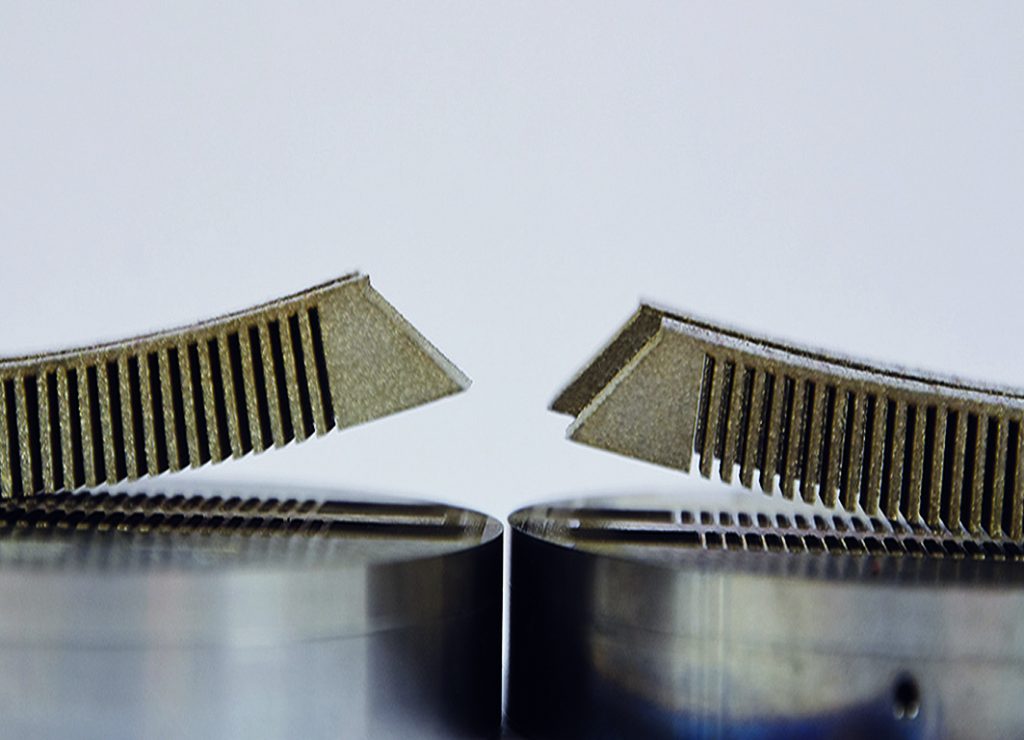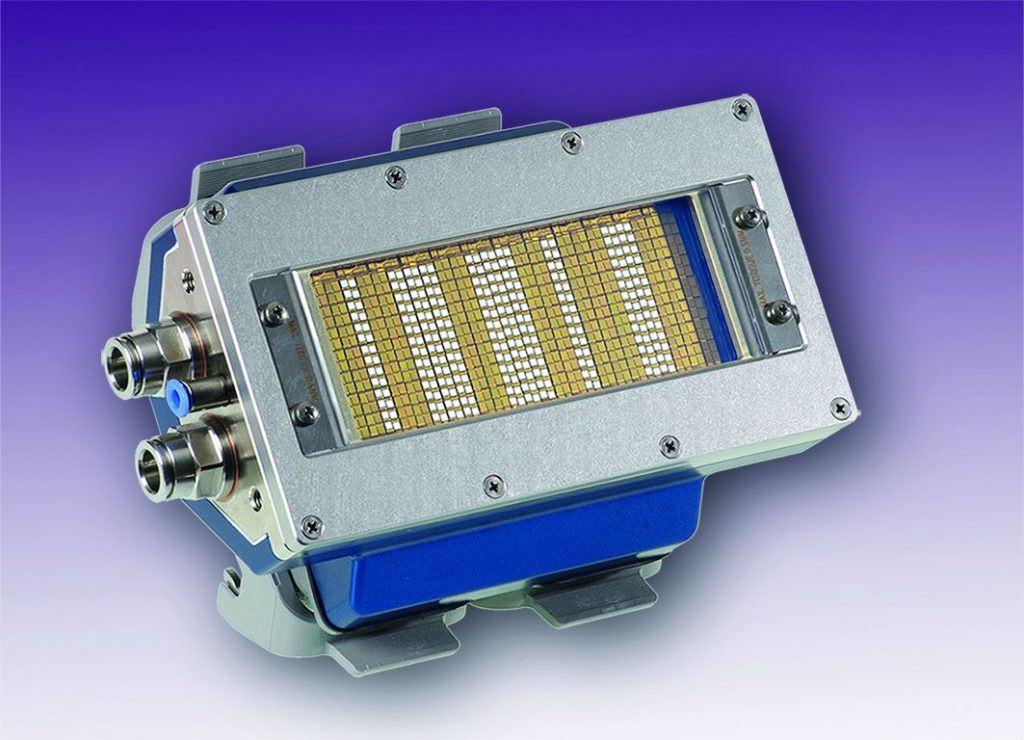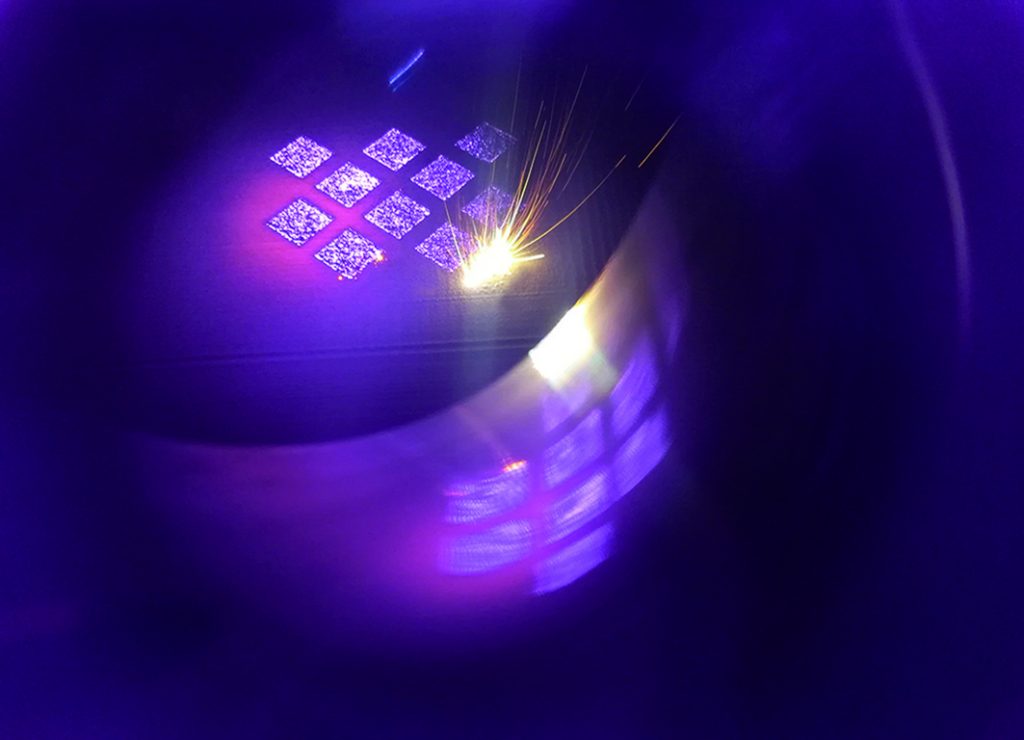The Fraunhofer Institute for Laser Technology ILT based in Aachen, Germany, has developed a new laser powder bed fusion (LPBF) based 3D printing method that reduces a component’s residual stresses and distortion.
In a proof of concept test, Fraunhofer ILT scientists have 3D printed a component made from superalloy Inconel 718 that reportedly “demonstrated significantly reduced distortion.” In this test, the component was heated up to a temperature of 500 °C, with heat sources both above and below.

The future of LPBF and metal 3D printing
Fraunhofer ILT is part of the Fraunhofer Society’s 69 applied science research institutes across Germany. Together with the Fraunhofer Institute for Applied Optics and Precision Engineering IOF it has formed the Fraunhofer Cluster of Excellence which seeks to increase the society’s international leadership in laser technology. As of November 2017 ILT, along with 5 other institutes in the Fraunhofer family, has been leading the Future Additive Manufacturing (FutureAM) project to accelerate the development and reduce the cost of metal 3D printing processes.
The institute’s most recent effort in LPBF, to be presented at formnext 2018, Fraunhofer ILT is working with infrared laser specialist Philips Photonics on a government-funded Digital Photonic Production DPP research initiative title DPP Nano.

Reducing residual stresses
Through project DPP Nano, Fraunhofer scientists have created a new balance of heat within the build chamber of LPBF systems.
This 3D printing system relies on heating the print bed from below. However, such methods are a cause in the creation of internal thermal stresses throughout a 3D printed part, which in turn can lead to defects.
In addition to the bed, the DPP Nano project system also has a heat source in the top of the process chamber – six vertical-cavity surface-emitting laser bars (VCSEL).
Activated independently, each VCSEL bar emits 400 W of power and provides 808 nm infrared radiation. With the bars, components can be heated up to several hundred degrees Celsius, with monitoring via infrared camera.
“The VCSEL heating reduces the thermal gradient, thus also the stresses, making it possible to produce taller parts,” explains the institute. Following the Inconel 718 test, scientists are now looking to tune the process to work with crack-prone titanium alumnides.

Self-correcting 3D printers coming soon
A great deal of research has been applied to an understanding melted powder behavior and the subsequent improvements of the powder bed fusion process.
At Lawrence Livermore National Laboratory (LLNL) Ibo Mathews and his team have been leading studies into the “spatter effect” of metal powders inside the print bed. By applying high speed imaging and algorithmic analysis to this behavior, LLNL teams are also one step closer to fixing components “on the fly” as they are 3D printed. Similarly, Argonne National Laboratory scientists are applying infrared imaging alongside synchrotronic x-rays of the powder bed to increase the ability detect flaws in 3D printed parts.
Fraunhofer ILT’s VCSEL heating process is one possible solution to managing LPBF processes in a more reliable manner. Further details of the process will be presented by the Fraunhofer ILT team at booth E70, formnext from the 13 through the 16th of November 2018.
Last year, the institute presented its large-format SLM laboratory system at the show, along with samples from the 2018 3D Printing Industry Awards-nominated TwoCure 3D printing process. Details of the 2019 3D Printing Awards are coming soon.
For all the most recent research updates and live coverage of leading 3D printing events, subscribe to the 3D Printing Industry newsletter, follow us on Twitter and like us on Facebook.
Seeking jobs in academia? Make your profile on 3D Printing Jobs, or advertise to find expertise in your area.
Featured image shows “With up to 2.5 kW, the working plane is preheated independently of the overall height.” Photo and caption via Volker Lannert/Fraunhofer ILT



